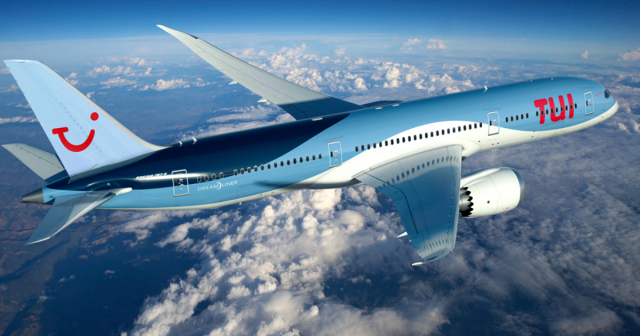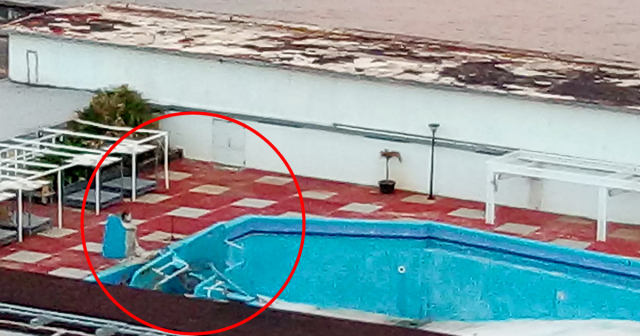
The flow of international visitors to Cuba suffered a 67% drop in 2021, accentuating the decreasing trend of tourism in the last three years, according to official figures.
Preliminary data published this Friday by the National Office of Statistics and Information (GOOD) indicated that at the end of December, Cuba received 573,944 travelers, a figure that represents 39.8% of the travelers received in the same period of 2020, which is equivalent to 869,181 fewer travelers.
The drop is 87% if 2019 is taken as a reference, even without the effects of the pandemic. That year, 4.2 million tourists visited the island.
In 2020, the country received 1,443,125 travelers, despite the mobility restrictions imposed worldwide due to the coronavirus. The last peak of tourism in Cuba was reported in 2018, when 4.7 million visitors arrived in the country.
Although in 2020 the number of travelers arriving in Cuba from Canada topped the list, with almost half a million (413,409), followed by travelers from Russia (74,019), this position was reversed in 2021 when 146,151 travelers were received from the country. Slavic and 68,944 travelers from Canada. Definitely, one of the most striking data on the behavior of international tourism in recent times in Cuba.
In the case of international visitors, Cuba received 356,470 visitors until December 2021, which represents 32.8% in the same period of 2020. “That is to say [the country received] 729,450 fewer visitors than in the same period of the previous year,” reported the ONEI.
Published statistics define “traveler” differently than “international visitors.” While travelers are those who move from one country to another, regardless of their nationality, international visitors are "people who visit a country different from the one in which they have their usual place of residence for a period not exceeding one year." year, whose main reason will be for leisure purposes.”
The distinction allows travelers from the “Cuban community abroad” to be broken down. Last year 52,804 Cubans traveled to the island, which represented 9.2% of the total travelers that Cuba counted in 2021. If it is taken into account that the country received 150,388 Cubans in 2020, the drop compared to 2021 was 35 percent (97,584 fewer Cuban travelers than the year 2020).
With this figure, The “Cuban community abroad” became the third source of travelers bound for the island, followed by travelers from Spain (12,520), Germany (9,159), the United States (7,039), Italy (5,462), France (5,434), the Philippines (4,181) and Poland (3,622). Except for Russians, travelers of all other origins experienced a sharp decline.
In the middle of last year, the ONEI warned that the arrival of international tourists to Cuba had fallen by 94 percent so far this year, due to the crisis generated by the coronavirus.
After Cuba's border closure in March 2020 due to the coronavirus pandemic, the tourism sector - which was already affected by former President Donald Trump's sanctions - saw its profits drop to zero.
International borders were opened in October, but an increase in positive cases of the virus forced the government to apply new flight restrictions for many countries. At the moment, the presence of new variants of the virus such as Ómicron raise fears that 2022 will once again be a bad year for international tourism in Cuba.
“The Cuban tourism model has not been reflected upon enough, because the authorities have used it as an instrument to raise foreign currency without going into further considerations,” economist Elias Amor said a year ago, observing the tourism data in Cuba in 2020.
“What could happen if, instead of changing the cycle this year, the crisis situation in tourism extended until 2023, perhaps?” he asked with a medium and long-term vision for this sector.
“Despite the serious situation, the regime has not reacted for almost a year, and has not taken into account the importance of adopting a shock plan focused on avoiding insolvency and subsequent bankruptcy of businesses, especially small private entrepreneurs. , which can deal a hard blow to the sector from which it will not be able to recover when the situation changes and it has to be up to date to serve the tourists who, almost certainly, will return,” considered the economist.
In August 2020, the news made headlines that The Cuban government dedicated more money to the real estate and tourism sectors than everything planned for Health, Education and Agriculture, according to official 2019 figures published by the ONEI.
“The vulnerabilities of Cuba's economic structure, aggravated by the recent crisis associated with the pandemic, impose an urgent review of investments. A country with a significant food deficit cannot afford to dedicate 5% of the investment to agriculture,” Cuban economist Pedro Monreal said at the time.
What do you think?
SEE COMMENTS (1)Filed in:






